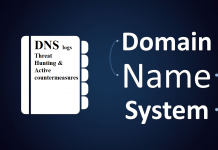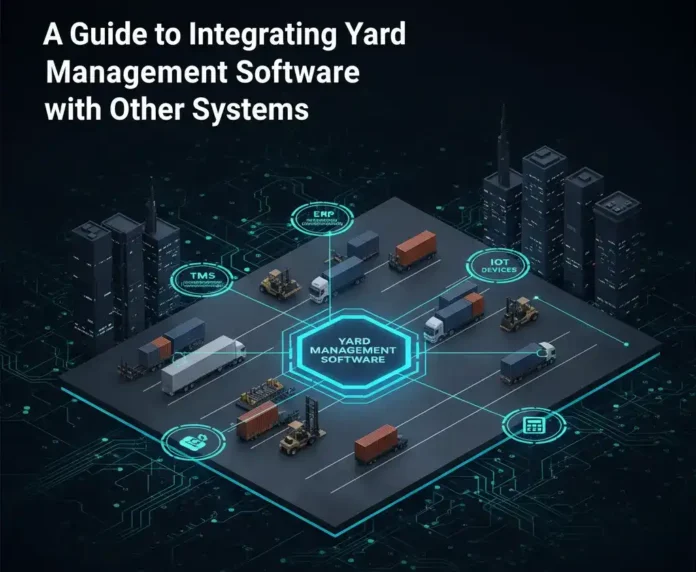Good logistics are necessary for businesses trying to improve their processes and maintain competitive advantages. While yard management software is a very important part of yard operations, the best results only come when it can communicate with other systems to achieve smooth information flow. The key to success lies in proper integration planning and execution.
Trailer yard management software integration with existing business systems creates opportunities for improved coordination and data accuracy. This guide explains how businesses can successfully integrate yard management solutions with their existing technologies to improve productivity and operational control.
Understanding Yard Management Software
Yard management software tracks the movement of all vehicles and goods that are coming inside and outside the yard. The software provides features such as gate management, load tracking, and appointment scheduling for better coordination. These capabilities aim to organize operations, minimize waiting times, and increase yard productivity. But when the software works together with other key systems in your organization, the advantages increase substantially.
Benefits of Integration
Integration of yard management software with other systems provides several important advantages for business operations. It allows data to flow freely from one department to another, without needing to re-enter information manually. It helps decision-making by providing end-to-end visibility into operations with better connectivity. It also reduces errors, resulting in improved accuracy and productivity in different processes across the organization.
Key Systems for Integration
Understanding which systems work best with yard management software helps prioritize integration efforts and maximize benefits.
Warehouse Management System (WMS): Integrating yard management with a WMS improves the flow of products throughout the facility. When trucks are loaded and unloaded, the same cargo information is processed and stored in the warehouse system, which reduces delays and improves inventory capacity management.
Transport Management System (TMS): A TMS can help with better transportation planning through improved integration capabilities. According to the Federal Motor Carrier Safety Administration, proper system integration can improve delivery times by up to 35% in commercial transportation. It helps track vehicle status in real-time, enabling better logistics scheduling and optimal utilization of transportation resources.
Steps for Successful Integration
Following a structured approach helps minimize risks and maximize the chances of successful implementation.
Assess Current Systems
Before integration begins, an analysis of existing systems is needed to understand current capabilities and limitations. Recognizing what current software can do, as well as its weaknesses, allows gaps for integration to be identified. Understanding how your yard management software will work with your current technology environment helps plan the integration process more effectively.
Define Integration Objectives
Define what you want to achieve through the integration process clearly and specifically. This may involve goals such as increasing data quality, decreasing manual processes, or improving real-time visibility across operations. These goals help define an integration process that aligns with business needs and delivers the expected results for your organization.
Choose the Right Integration Method
When it comes to integrating systems, there are various options available for businesses to consider. Methods include using Application Programming Interfaces (APIs), middleware, or custom coding solutions. The selection of the right approach depends on factors such as the complexity of existing systems and the level of integration required.
Collaborate with Stakeholders
Businesses must bring stakeholders from different departments into the planning process since integration affects multiple areas. This collaborative approach helps everyone using the integration get what they need from the new system. It also aids in recognizing potential bottlenecks and developing mitigation measures before problems occur.
Test and Validate
Integration testing is crucial to make sure that everything works properly and systems perform their intended functions. Businesses must test to verify that data moves as required and that all functions work correctly. This phase allows tracking and fixing bugs before deploying the system on a large scale throughout the organization.
Implement and Monitor
Once testing is complete, businesses can implement the integration in their operations. Ongoing monitoring is vital to confirm that systems are functioning smoothly without issues. Consistent review identifies problems and strengths, making sure the integration stays relevant and effective over time.
Addressing Common Challenges
Integration can present challenges, but proactive steps help avoid some of the inevitable problems that arise. If systems are outdated or there is insufficient documentation, there could be compatibility issues. These issues can be reduced through regular updates and comprehensive documentation of all processes.
Integration security vulnerabilities must also be anticipated and prevented with strong data protection measures in place. Having a clear backup plan helps minimize disruptions if technical issues occur during the integration process.
The Role of Training
Training employees on the new integrated system is essential for successful implementation. Staff members need proper training to use the new system effectively and gain all the advantages it provides. Training minimizes resistance to change and increases the productivity of all operations across different departments.
Long-Term Benefits
Successful integration provides long-term benefits that continue to grow over time. Businesses experience improved data accuracy, reduced operational costs, and better decision-making capabilities. The integrated system also provides better customer service through faster processing times and more accurate information sharing.
Regular system updates and maintenance help maintain these benefits and adapt to changing business needs. Companies that invest in proper integration often see continued improvements in operational performance and competitive advantages in their markets.
Conclusion
Integration of yard management software with other systems provides great advantages for business operations. It simplifies tasks, increases data precision, and improves overall effectiveness across all departments. With a thoughtfully executed integration process that anticipates challenges, businesses can maximize the impact of their yard management solutions. This helps maintain operational excellence as technology continues to evolve and business needs change over time.



































